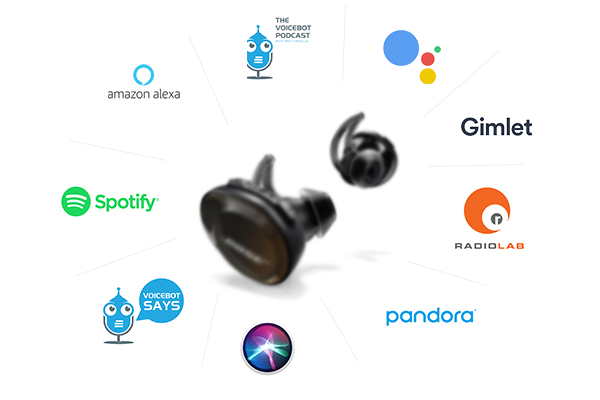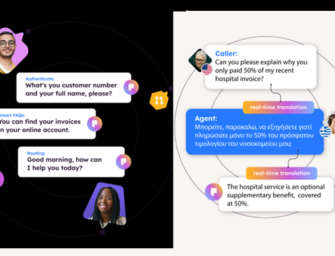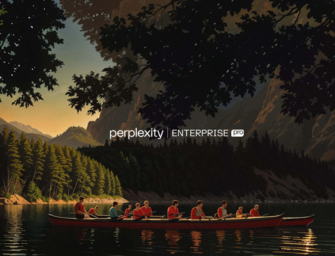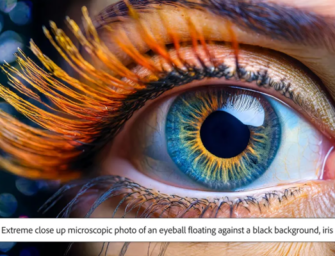The Cambrian Explosion of Audio Content – Part 1

Hearables present a number of exciting new use cases for our in-the-ear devices, from serving as a home for our smart assistants, to real-time language translators, to the ways in which they can be purposed as bio-metric data collection tools. This transformation from single-function devices to multi-function devices means that there is an increasing number of reasons to wear hearables for extended periods of time. Therefore, the shift toward computerized in-the-ear devices will not only translate into new types of use cases, but the existing use cases will also undergo a renaissance of their own. The most notable example of this is the world of audio content consumption.
From Single to Multipurpose Devices and Changing Expectations
When someone uses “dumb” earbuds or headphones, they’re using single-purpose devices designed specifically to consume audio content; therefore, the user has a specific intent when they’re using the devices. The subtle difference with hearables is that they allow for content consumption without necessarily requiring intent due to the fact that they’re multipurpose devices. For example, someone using Bluetooth hearing aids can listen to a podcast as a secondary function because the core functionality they’re using the device for is actually amplification. This might seem novel now, but there’s no reason to think we won’t want some type of device in our ears for extended periods of time once the utility has reached a certain point and the devices’ form factor facilitates longer usage.
We should expect hearables to progressively become more and more capable, inch by inch, like in the example in the video below. Now that Apple has enabled Siri to search its podcasting app, you can simply double tap your AirPods and ask Siri to play a recent episode of any podcast within its library. No pulling out your phone and tapping to search for the podcast required. This continual erosion of friction should make hearable devices more appealing for longer periods of time, which means more potential time to passively consume audio as well.
The Aural Attention Economy
Many of the leading tech companies today have business models or aspects to their business built around monetizing consumer attention on the internet. Netflix, Facebook, Twitter, YouTube (Alphabet), Snapchat and others have all found ways to capitalize on our attention spans through images, video, or text by charging subscription fees or using ad-based models. These companies are constantly competing with each other for our attention, and primarily have been competing through visual elements.
A big reason why these companies are so successful in capturing our attention is that mobile computing enables us to quickly and constantly consume content. The content is so widely accessible that we can gather small bites, such as quickly scrolling Twitter or Instagram, or larger portions like watching episodes on Netflix on the train or plane, whenever convenient. The 66 million smart speaker users in the US combined with the increasing prevalence of voice-assistant integrated cars and shift to hearables lay the foundation for companies to begin building businesses and offerings specifically geared toward audio consumption. There’s now more opportunity to monetize our attention via our ears.
Netflix for our Ears?
Spotify announced in its earnings report on Tuesday that it has purchased Gimlet Media for $230 million, making it one of the largest acquisitions in the small podcasting space that generated only $315 million in total advertising revenue in 2017. Podcasting ad revenue did grow by 86% year-over-year, so, it makes sense that Spotify wants to buy a podcast publisher to differentiate from its biggest competitor, Apple Music, via content while also tapping into a potential new revenue stream. This is similar to Netflix’s strategy when it started producing unique content limited to its service. Spotify has stated that the plan initially is not for Spotify-only podcasts but admitted that exclusive content may be the goal down the road.
The other reason this acquisition makes sense has to do with Spotify’s gross profit margins. Increased podcast consumption could make Spotify less dependent on music, which is very expensive with the cost comprising roughly 75% of the company’s revenue due to royalty agreements. Original podcasts could ultimately lead to movie or streaming service deals too, like Amazon’s Homecoming with Julia Roberts, which was originally a podcast owned by Gimlet. It should come as no surprise that Spotify’s CFO spearheading this acquisition, Barry McCarthy, served as CFO at Netflix for 11 years.
Spotify’s acquisition of Gimlet signals that Spotify might ultimately be aspiring to be the “Netflix for our ears.” Company CEO Daniel Ek announced on his blog that his company is looking to spend roughly $500 million on acquisitions this year and that he foresees 20% of all Spotify listening will be non-music listening in the future. So, along with Gimlet and Anchor (more to come on this next week), we should see Spotify continue to acquire companies that move beyond its streaming music origin. As the largest global streaming service with more than 200 million monthly active users, these acquisitions will equate to a diverse assortment of audio content ranging from music to podcasts to whatever else the company is considering (audiobooks?). It will be interesting to see how the largest podcast network provider, Apple, responds to Spotify’s new focus on podcasts.
Hearables Increase Audio Convenience
Marc Andreessen, the co-founder of the Andreessen Horowitz venture capital firm, was recently asked during a podcast interview where he thought the potential of wearable technology lies. Interestingly, Marc immediately jumped to audio, citing the success of AirPods, the phenomenon of having a “voice in your ear,” and stating that he thought audio will be “titanically” important to the future. These new audio devices, like AirPods, make audio content that much more convenient to consume.
The increasing number of devices entering the market that make audio consumption more conducive should tempt more professional publishers and platform companies to go the way of the ear. Spotify will certainly show the viability of this approach by using a similar playbook to Netflix when it began transitioning into a content producer. As I will point out in next week’s column, however, this Cambrian Explosion in content production will not just come from the professional publishers, but from the users as well.
Competing For Ear Share – Apple AirPods, Google Pixel Buds, and Amazon Alexa
Interpreter Mode Rolls Out to Google Home and Smart Display Devices








